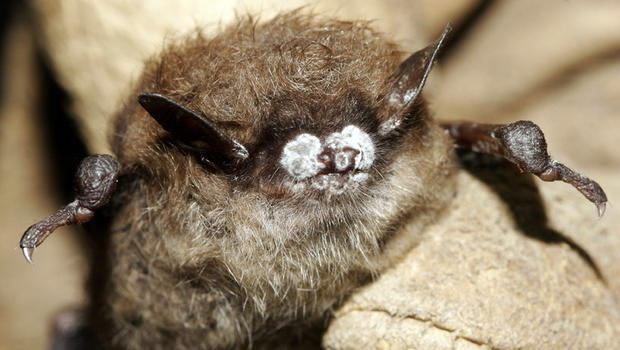BATS: ESSENTIAL BUT MISUNDERSTOOD -- AND NOW IN TROUBLE
Bats! Such harmless and essential creatures — yet, even now, still so often feared and misunderstood. If you see a bat flying around at dusk in the Kootenays, be aware that the little creature is eating insects at a great rate. Insect-eating bats are of vital importance to farmers around the world for controlling insect pests; they save farmers billions of dollars a year by feasting on bugs that would otherwise feast on crops. They also make life so much more bearable for humans and other creatures that other insects like to bite.
No, bats will not “attack” you and are not at all likely to get tangled in your hair; if they fly close to your head, they are eating flying insects that are attracted to you. In fact, the bats are protecting you by picking off the insects that want to attack you. Remain calm, be grateful, and let them do their job.
Some other types of bats in other parts of the world feast on nectar, and are specialists in pollinating a number of crops, such as agave — no bats, not so much tequila!
Bats are surprisingly intelligent and friendly creatures, too. People who have rescued or otherwise befriended bats report that they recognize their human friend and have come back to visit.
But if you see a bat flying around in the daytime here, that bat may be in trouble. A deadly bat disease, a fungal infection known as “White Nose Syndrome” (WNS) for reasons evident in the picture above, has been killing North American bats, and is moving toward our area. Recently a bat with WNS was found near Seattle, Washington. The Kootenay Community Bat Project is concerned about bats in our area, and is asking people to be on the look-out for day-flying bats — and to report them.
If anyone finds a dead bat, the Kootenay Community Bat Project asks that the finder use a plastic bag to pick up the little corpse and store it in a freezer labelled with the date, location of find, and the finder’s name, and to use the contact information in the press relase below:
On 31st March 2016, Washington Department of Fish and Wildlife confirmed that White-Nose Syndrome had been detected on a dead bat near Seattle, Washington. This is very worrisome for the health of bat populations in British Columbia. The BC Community Bat Program in collaboration with BC government and Wildlife Conservation Society Canada is developing a rapid response to this emerging crisis.
“We knew this deadly fungus that kills bats was moving westward across North America” says Juliet Craig, Coordinator of the Kootenay Community Bat Project (KCBP) and BC Community Bat Program, “but we thought we had many years to prepare”.
Currently there are no known treatments for White Nose Syndrome that can be used to save bats in the wild. However, mitigating other threats to bat populations and preserving and restoring bat habitat may provide bat populations the resilience to rebound from the mortality that may be caused by the disease. This is where the KCBP and the general public can help.
“Although White-Nose Syndrome affects bats in caves, we have our best chance at detecting the presence of the disease during springtime when bats return to building roosts, making the work of our community bat program more important than ever before” continues Craig.
Funded by the Columbia Basin Trust, Habitat Conservation Trust Foundation, and the Habitat Stewardship Program, the KCBP conducts public outreach activities, responds to public reports of roosting bats in buildings, promotes the installation of bat houses, and coordinates a citizen-science bat monitoring program.
“We are asking the public to report dead bats to the toll-free phone number or email below and to also provide information on bat roosts. Bat carcasses will be submitted for testing of White-Nose Syndrome and may provide the earliest indication of the presence of the disease in BC” says Craig.
If you find a dead bat, be sure not to touch it with your bare hands. Collect it in a bag and label the bag with the date, location and your name, and then put the bag in the freezer. Contact the KCBP as soon as possible for shipping directions and further information.
The KCBP also encourages residents to report bat roosting sites in building structures, such as attics, sheds and bat houses, to help identify where certain species are present; if you need to evict bats from a structure, you are encouraged to contact the KCBP who can provide information on proper procedures to follow.
To contact the Kootenay Community Bat Project, email juliet@kootenaybats.comor call 1-855-922-2287 ext. 14
For more information on bats, here are some interesting sources. Go to this link for a quick read of facts, and some pictures. For a longer, fascinating read about one man’s life-time work (and a lot of exciting adventures!) researching bats and educating others about their value, read the book “The Secret Lives of Bats” by Merlin Tuttle — it’s at the Rossland Public Library. Or go to his website for more pictures and information: http://www.merlintuttle.com/
























